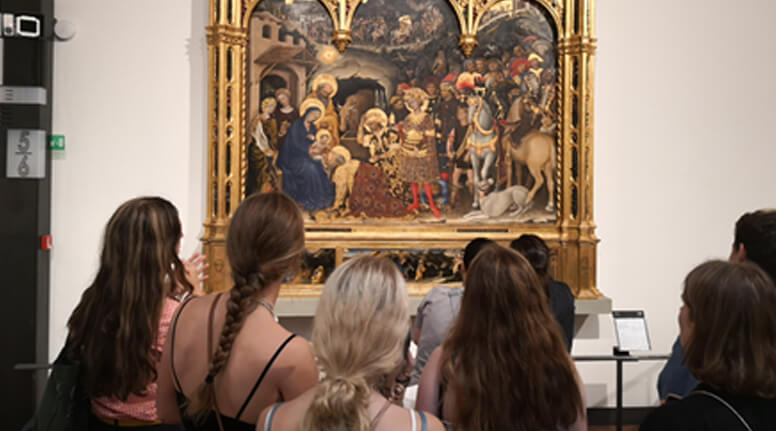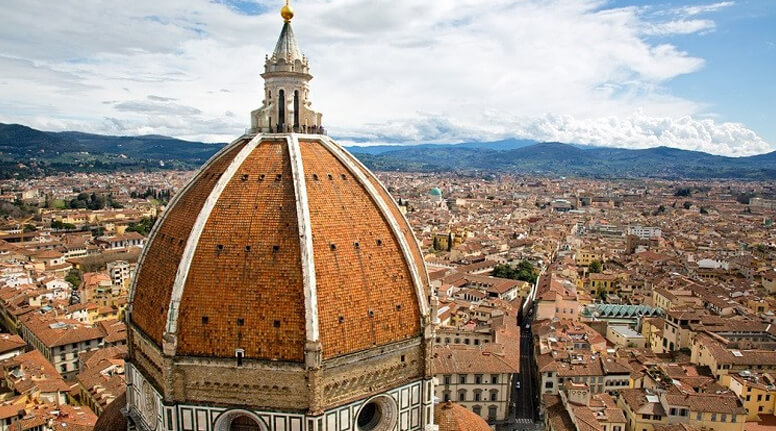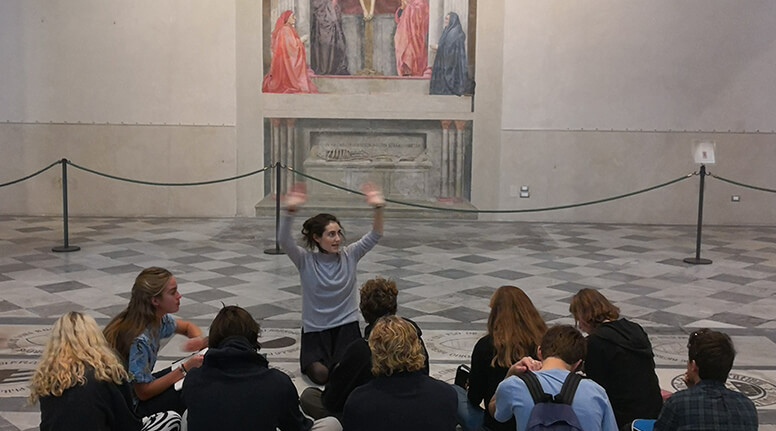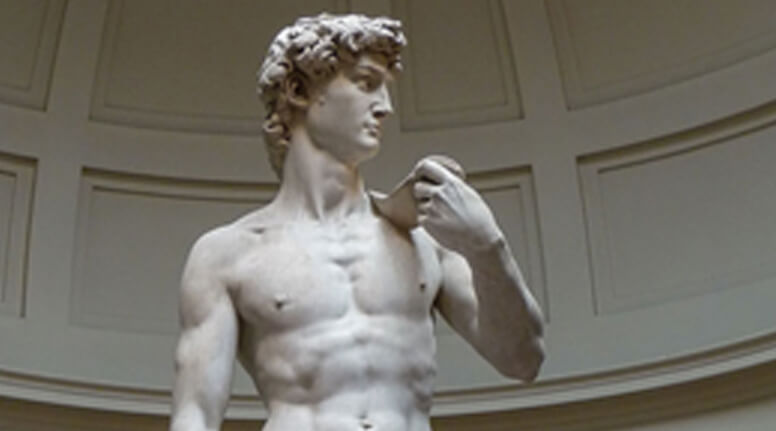The History of Art Department took a number of Sixth Form pupils to Florence for four days to enhance their studies and see a number of works which they are currently studying on the course in the flesh. Here, five pupils share their experiences.

My highlight was our first afternoon in Florence, at the Uffizi Gallery, where even the corridors are a work of art. The entire building was beautiful and my favourite painting was The Adoration of the Magi by Gentile da Fabriano. It was highly ornate and decorative, covered in gold – very characteristic of the International Gothic Style where they believed that the more gold in the painting amounted to more spirituality, portraying the patron’s love for God. Art during the Renaissance was all about religious subjects, as wealthy patrons hoped to atone for their sins through art.
Jess (M)

After arriving in Florence we headed straight for Florence Cathedral, more commonly known as the Duomo. We stared up in awe at the magnificent building and then started to talk about it in more detail, in particular, Brunelleschi’s dome on top. In the year 1426, the proud Florentines built a glorious cathedral but instead of provoking civic pride, it was seen as a great source of embarrassment because the dome could not been completed – no one knew how to build on such a huge scale.
We learnt how Brunelleschi decided that he would use a magna rota (a form of pulley system crane) to get the bricks up but he would also use oxen to power his mechanisms to allow the bricks to reach the heights required. Brunelleschi also layered the bricks in a herringbone pattern, an Ancient Roman technique. This was one of the first examples of artists and architects looking back to classical antiquity, which is why the term Renaissance was later coined.
The dome also needed to support itself – this is where Brunelleschi’s genius really shines through. He decided to use two shells, making the whole structure lighter and developed an ingenious system of scaffolding. These innovations are what make this building a revolutionary feat of engineering.
For such a small city, there was an awful lot to do and an incredible amount of things we were able to see in such a brief stay of around three days. The tour guides were fantastic, their love and enthusiasm for the subject made the trip even more enjoyable.
The climb to the top of the Dome was tiring for most – a few of us attempted to count the steps up the narrow, circular staircase but we each lost count around the two hundred mark – though completely and utterly worth it as when we reached the top, the scenery was breath-taking. As we ascended the steps up towards the top of the dome, we could see both the intricately decorated ceiling and the double-layered internal structure of the dome itself, designed and created by Brunelleschi for a competition.
Ollie (G) and Molly (I)

At the end of the four days I thought about the works that particularly stood out to me for various individual reasons. My personal favourite has to be the Pazzi Chapel purely because the building is completely reflective of its purpose. The moment I entered, I could not help but feel calmed and contemplative and understand how, for a religious person, this would encourage worship.
Masaccio’s Trinity would probably have to be my favourite painting that we saw because, in person, the realism was even more astounding and I got a much greater appreciation of the scale. Many thanks go to all the staff on the trip and Art History Abroad for allowing us all to extend our understanding of some truly incredible works of art.
Georgia (J)

After the first day, the amount of depth and detail the lovely AHA tutors managed convey to us enhanced my interest in the subject. One of the most memorable days for me was going to see Michelangelo’s David in the Galleria dell’Accademia. The Renaissance sculpture represents the Biblical hero David, who was a favoured subject in Florentine Art, as it was known he represented Florence. David was young, small and intelligent just like Florence, who cleverly built up their economy through the wool trade. By idealising David, Michelangelo portrays him to be almost Greek god-like which shows the influence of classical antiquity. Furthermore, the large hands, feet and head are used to show the status that Michelangelo wanted David to have.
Josie (K)


